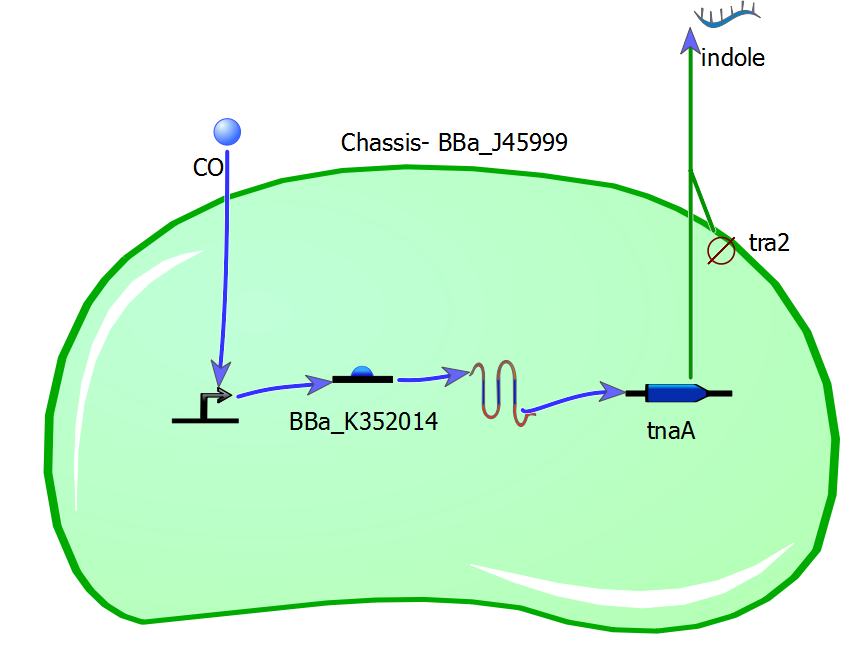CREATING THE GENETIC CIRCUIT
From 2012hs.igem.org
(→Creating the Genetic Circuit) |
|||
| Line 24: | Line 24: | ||
<span style="color:gold">Click here to see our [[SAFETY]] page </span> | <span style="color:gold">Click here to see our [[SAFETY]] page </span> | ||
| - | + | [[Team:Tyngsboro MA Tigers| Return to main page]] | |
Revision as of 14:15, 16 April 2012
Creating the Genetic Circuit
Once we had our idea solidified, the next step was coming up with a circuit to make our idea into a reality. Using the TinkerCell program to create an example of the cell, we wanted to follow the KISS rule and keep things as simple as possible. The 2010 METU iGEM team created a part that successfully detected carbon monoxide, and contained a Lacl promoter, RBS, and CooA, but from that point what the output was seemed to be fairly open for change. We wanted the output smell to be very unpleasant and trigger a negative response, and decided indole, the smell naturally made by e. coli, would be an excellent choice. We chose tnaA, the indole producing gene, as the last major step in our genetic sequence, and an odorless chassis so that indole wouldn't be naturally produced by the detector.
Obstacles in creating the circuit were finding a tnaA producing gene (still working on that) and...
The parts chosen were all marked as 'working' in the parts registry, and most had the same assembly methods, making them compatible. Our major concerns are that we won't be able to find a tnaA gene by itself, or that the parts chosen won't work be compatible in practice.
Also, special thanks go out to our iGEM advisers, Alyssa Henning, !

Parts We are Considering
Chasis: BBa_J45999
CooA: BBa_K352014 (CooA coupled with placI and RBS)
tnaA: (for indole production)
- issue: we don't know if we can find a tnaA gene
three genetic circuits we are considering: one with GFP one with indole one with banana.
Click here to see our SAFETY page
Return to main page
 "
"